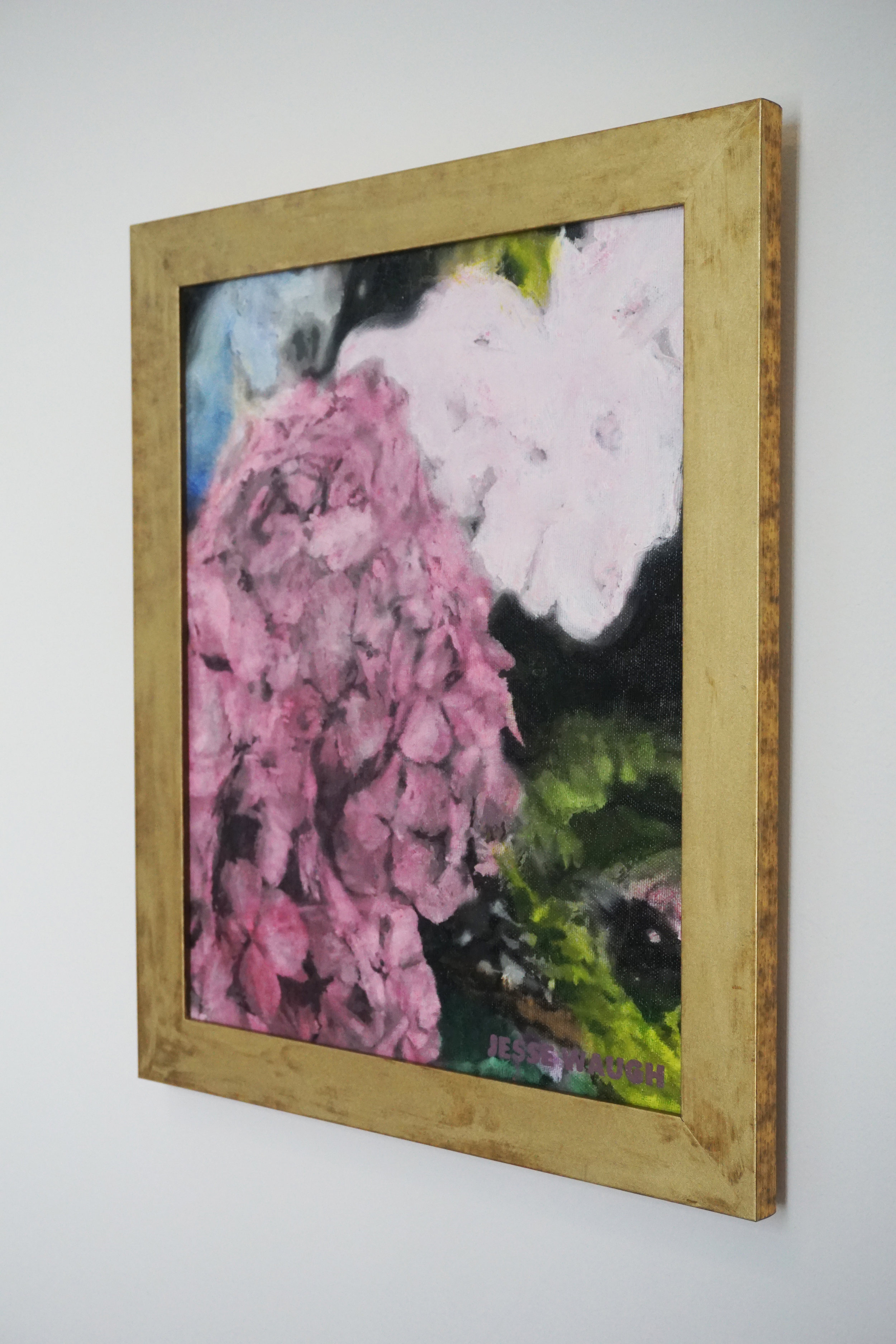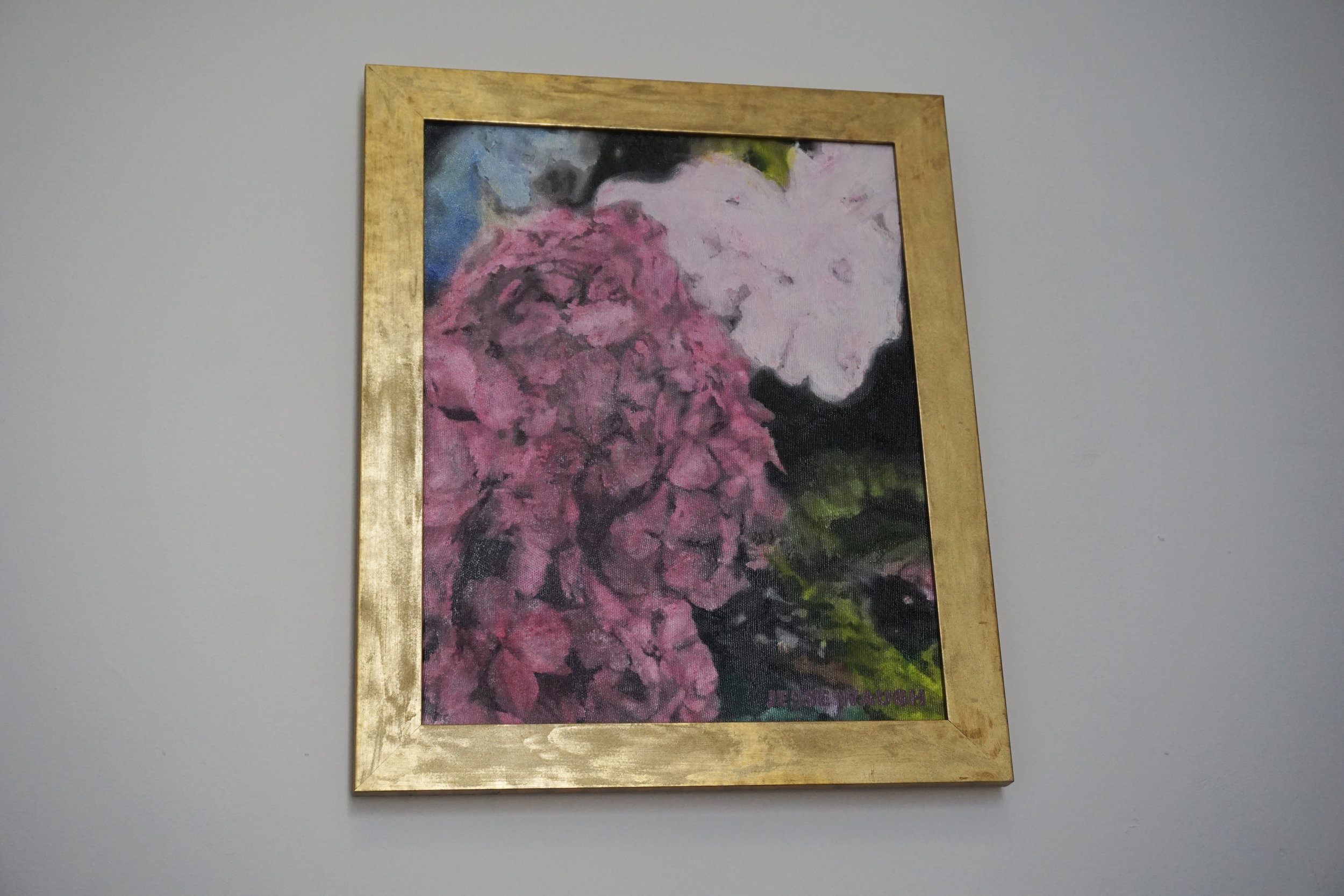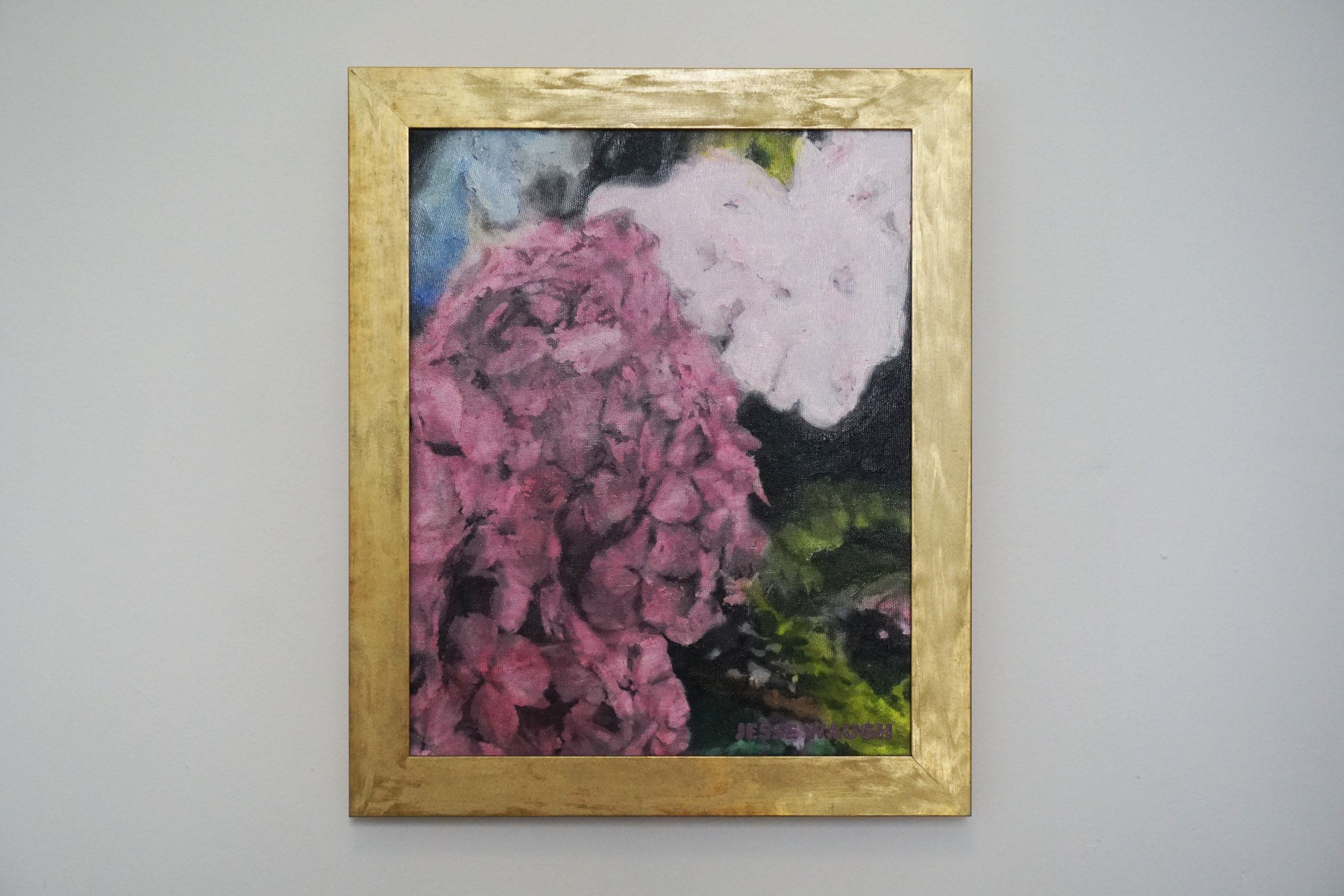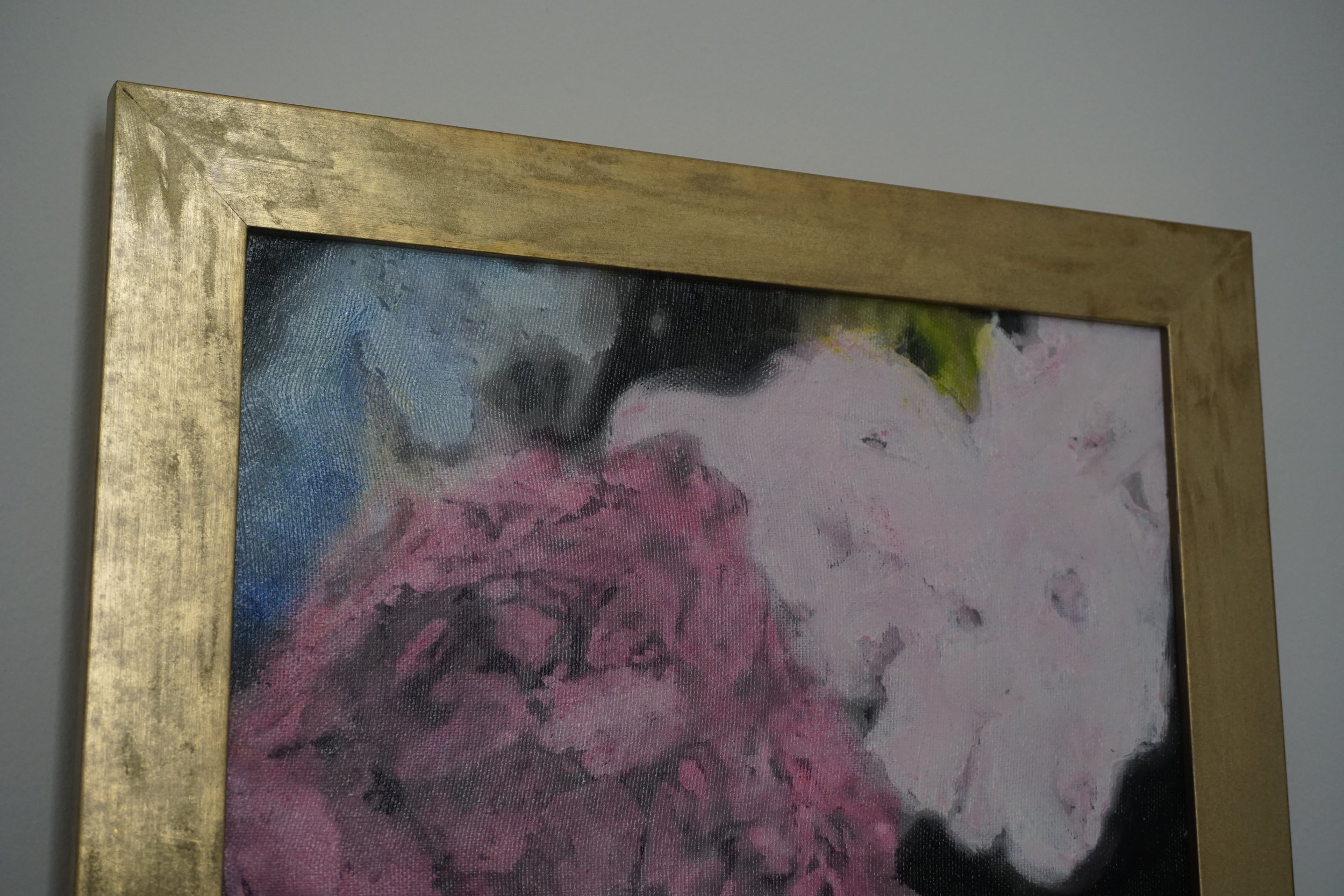The Pulchrist Talisman
Paul Sérusier
The Talisman / Le Talisman
1888
Oil on wood
27 x 21.5 cm
Musée d'Orsay, Paris
JESSE WAUGH
HYDRANGEAS AT ARLEY HERBACEOUS BORDER
2017
OIL ON CANVAS
33 X 41 CM
After I'd painted Hydrangeas at Arley Herbaceous Border, it gradually became more than just a painting - it became the most Beautiful painting I've ever painted up until this point. It came to embody both a successful exercise in Pulchrism, and a fully Art Nouveau contemporary painting. The technique I employed for it could be described as a combination of my usual grisaille / glazing, combined with a Munch-like flowiness and perhaps Edouard Vuillard-esque brush strokes.
But it took on more than the sum of its parts. It suddenly flashed in my mind one day that it actually bears some sort of -- perhaps spiritual - perhaps visual -- resemblance to The Talisman by Paul Sérusier. This was not a wish or a plan on my part: while I appreciate the philosophy which informed the work of Les Nabis, I wasn't overly impressed with the collection of Nabi art I saw at the Musée d'Orsay - although I do appreciate it.
The gist of the story behind The Talisman was that Serusier was adhering to Paul Gauguin's advice "How do you see these trees? They are yellow. So, put in yellow; this shadow, rather blue, paint it with pure ultramarine; these red leaves? Put in vermilion" when he painted it. The result was what might be the first Western (non-Oriental) abstract painting, and it indeed does hold power and soul in its strangely simplistic, colorful composition. It was a harbinger for all of Modern art!
Even though Hydrangeas at Arley Herbaceous Border was just a practice exercise -- a test for a potential series upon which I was considering embarking -- it proved to be my first fully successful exercise in Pulchrist painting -- in that it possessed an unforced Beauty which came from something greater than myself. It was also the least visually acute figurative floral painting I'd done, in that it features very loose fields of color and washy detail.
Another exceedingly strange occurrence with this Pulchrist Talisman was totally unexpected and still startles me when I look at it: Roughly around the time when I was painting Hydrangeas at Arley Herbaceous Border, a certain meme called "Kek" had somehow made a great impact across the web (whether by artificial or natural means I do not know). Kek was an Ancient Egyptian, androgynous, frog-headed deity of primordial darkness, which was ported, or transposed into the the ugly cartoon character named Pepe-the-Frog, through an amazing process of popular ascription by forum posters on the dark web, which took on god-like status for legions of conspiracy theorists, the "Alt-Right" and "Truther" communities, and people described as anti-semites.
The deeply bizarre surprise for me - which seemed to be a separate phenomenon from all of the other spiritual, aesthetic, and philosophical aspects of Hydrangeas at Arley Herbaceous Border which I elucidated above and will build upon below - was that Kek somehow seemed to appear in the lower right corner of the painting! I swear to Aphrodite that I had no intent whatsoever to paint such a thing.
I've since tried to wrap my head around the mythology surrounding Kek - both ancient and contemporary - and have gained a bit of knowledge about it - and I must say that there is something genuinely eerie about its associations with the rise of [an albeit fabricated] new right-wing in the United States and Europe. For it to appear in my Pulchrist Talisman is problematic as it suggests to me that my advocation of Beauty as the purpose of art may be tied in with the designed magical restoration of Order which I believe to be happening in the West and the world today. Since my creation of Pulchrism as an ideology in 2012 (which was founded upon my existing practice of living for Beauty), I've always been aware that Pulchrism went against the now-dominant socialist leftism in that it essentially advocated for a more or less classical hierarchy of aesthetic consideration. In this respect, I knew that it could be (and may have already been) labelled by certain people as right-wing -- though in Truth, Pulchrism is exalted far above bipartisan politics -- in that it strikes at the very core of Creation with its concentration on fundamental Beauty. "'Beauty is truth, truth beauty,' - that is all ye know on earth, and all ye need to know." - I have subsumed John Keats' famous line from his Ode on a Grecian Urn as the motto for Pulchrism.
After all this was manifested for me, a final (perhaps final - only time will tell) uncanny thing took place in relation to Hydrangeas at Arley Herbaceous Border. A person who I shall refrain from naming, but who seemed to me to voluntarily embody a sort of "willful vulgarity", took it upon himself to deliberately and violently destroy The Pulchrist Talisman [see photos below of the heart-wrenching result] - which had briefly been in his possession - but which he had viciously cast back at me in a fit of unnecessary drama. This last step in the process of The Pulchrist Talisman was an act of destruction which symbolizes to me the last-ditch effort of heterotrophic, Old World, past-age vulgarity -- with its hatred and envy of anyone who lives to create Beauty , and to trust fully in Deity and Divine Providence -- which actively persecutes and predates any person who opposes its predation and heterotrophy -- to attempt to destroy the Beauty which Pulchrism is manifesting in a world which has forgotten the Purpose of Art.
After being destroyed:









